India is very rich in its culture. Same goes with its Art or Paintings Forms too. Different forms of paintings that certainly have survived generations. The ancient Indian Folk Art Forms and styles of painting were handed through generations and continue to be practiced across the country. Let’s take a look at what makes each of these forms of folk art distinct.
Traditions passed down from generation to generation, Indian folk art Forms are still being practiced in many areas of the country. Because of its cultural diversity and distinctive, many artistic styles have evolved throughout the years. Some have been were left unaffected by the modernization process, and others changing to modern paint colors and materials. They all depict epics of religion as well as Gods and Goddesses mostly, however they’re all distinct remarkable, fascinating and unique by their own strength. Earlier they were painted with natural dyes and colors composed from mud, soil, charcoal and leaves, on cloth or canvas – providing a sense of antiquity and vintage nostalgia. Here are list of some Indian Folk Art Forms.
Let’s have a look at the 10 Most popular Indian Folk Art or painting Forms that are being used in across the country.
Phad Painting
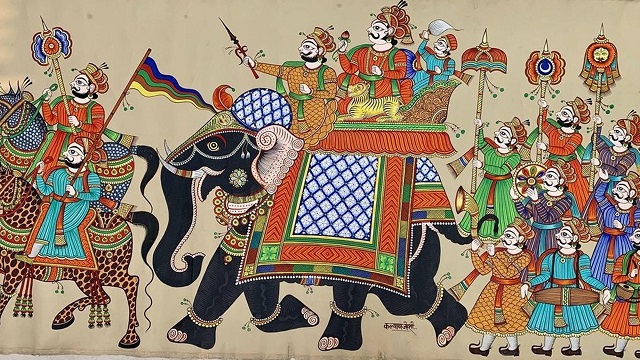
Phad is itself is self-describing Indian folk art forms. It tells a story about Pabuji.
It was developed in Rajasthan Phad is mostly the form of scroll that is a religious painting that depicts folk gods like Pabuji and Devnarayan. The 30 or 15 feet long canvas or the cloth paints on it referred to as the phad. Vegetable colors and a continuous story of the heroic actions and lives of deities are the hallmarks of these artworks.
Miniature Indian Folk Art Forms
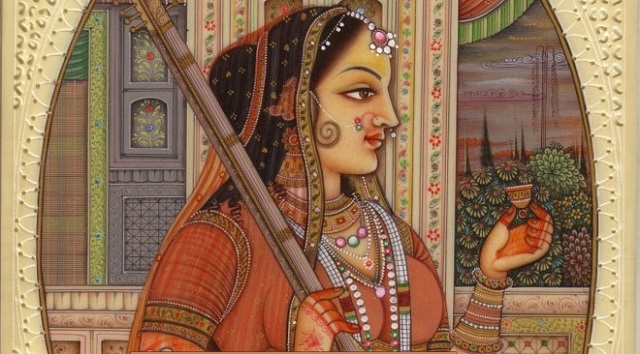
This kind of folk art forms of India is distinguished by their small size, but exquisite details and sharp expressions. The origins of Miniature paintings date back to the Mughal time period around the 16th century, miniature paintings are inspired by Persian styles and flourished during Shah Jahan and Akbar’s rule. Then they adopted the style of Rajputs and is still practiced in Rajasthan. Like other forms of art that depict epics and religious symbols. They stand out since human beings are depicted with big eyes as well as a pointed nose. slim waists, and the males are always adorned with the Turban.
Warli
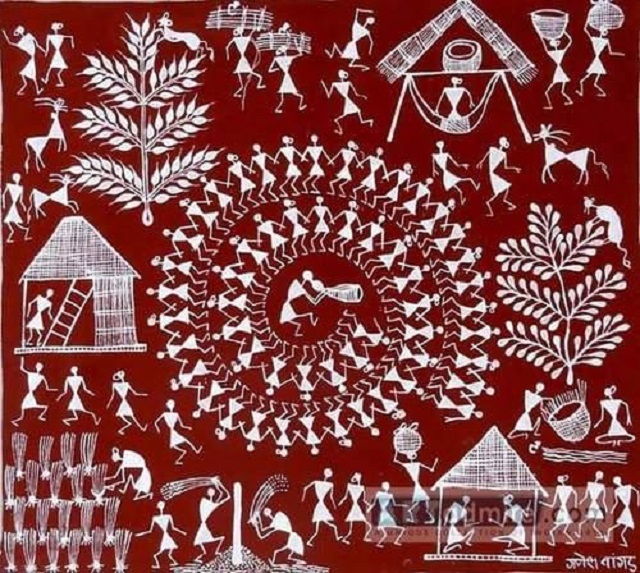
The origins of the Warli tribes of The Western Ghat of India, around 2500 BCE It is one of the most ancient Indian folk art forms. It is the most common use of triangles, circles and squares in order to form various shapes . They depict daily activities such as hunting, fishing festival, dance, and much more. The thing that distinguishes it is the human-like shape which is a circle, and two triangles. The artworks are created on the red ochre or dark background. The forms are in white colour.
Gond Indian Folk Art Forms
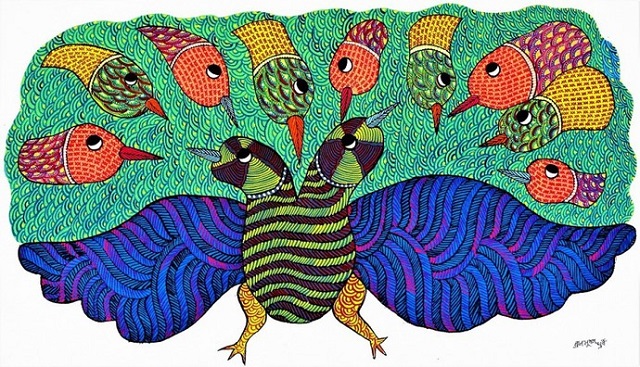
With a strong connection to nature The Gondi tribe from Madhya Pradesh created these bold colorful paintings which depict mainly flora and fauna. The colours are drawn from cow dung, charcoal leaves, and colored soil. If you take a closer look you will see that it is composed of lines and dots. These styles are now copied, however using acrylic paints. It is regarded as an evolution of this Gond art form, influenced by Jangarh Singh Shyam, the most well-known Gond artist who revived this kind of Indian folk art form for the world in the 1960’s.
Kalamkari Indian Folk Art Forms
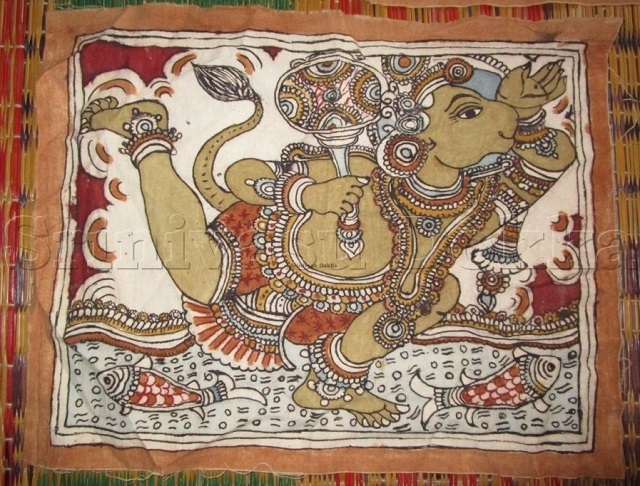
Kalamkari is one of its form of Indian folk art. Literally, it means ‘drawings using pen’, Kalamkari is one of two kinds of art in India: Machilipatnam, which originates from Machilipatnam in Andhra Pradesh and Srikalahasti, which is a product of Chitoor within the state of Chitoor. While the former refers to a the block-printed art form while the second is a flowing art that is created using a pen on fabric. Nowadays, Kalamkari art is used on ethnic clothing and sarees as well as depicting everything from fauna and flora to epics like Mahabharata and Ramayana.
Tanjore Indian Folk Art Forms
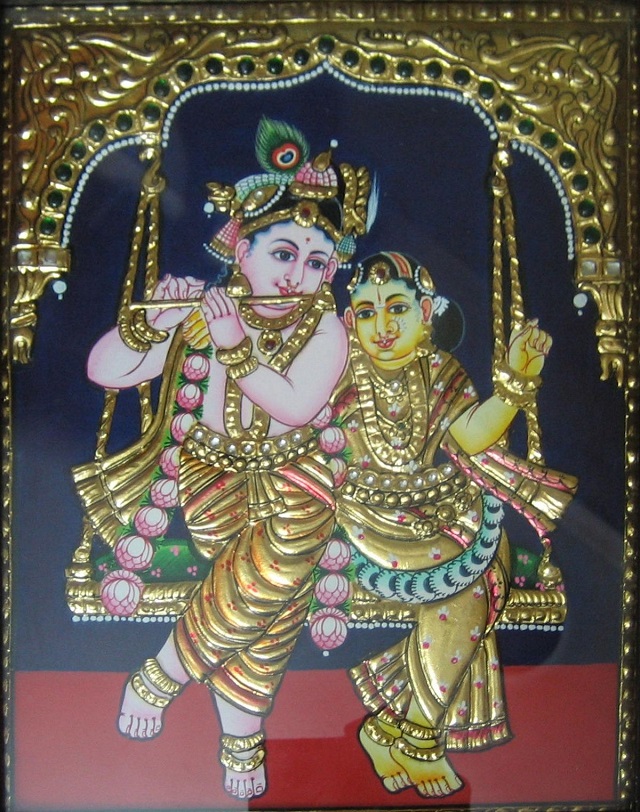
This kind of Indian Folk Art Forms originate from Southern part of the country.
From Southern part of India, Tanjore or Thanjavur paintings were created in the 1600s and were influenced through the Nayakas from Thanjavur. It is easy to recognize the Thanjavur painting through the usage of foils of gold that sparkles and gives the painting an eerie look. The wood planks portray the worship of gods, goddesses and saints. It draws inspiration from Maratha as well as Deccani art and also European styles.
Cheriyal Scrolls Indian Folk Art Forms

The origins of Nakashi Indian folk art forms are in modern-day Telangana the ancient art is practiced exclusively by the Nakashi family, and only there is a place where it has been handed through generations. The long scroll tradition and Kalamkari art have influenced these Cheriyal scrolls, a more stylized version from Nakashi art. They depicted epics and puranas. these scrolls of 40-45 feet served as a crucial visual accompaniment while saints were spotted singing or telling epic tales. They resembled modern-day comic panels and contain around 50 images per scroll. They use primary colours and a vibrant imagination, which is a stark contrast from the traditional rigour of Tanjore or Mysore paintings or arts.
Kalighat
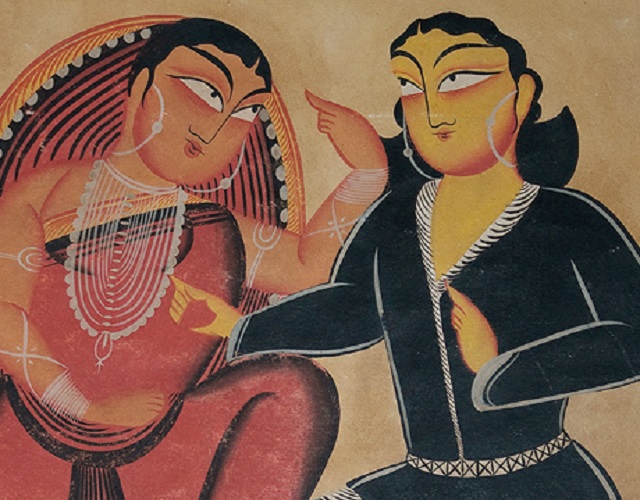
A style of painting that was recently discovered It was developed in 19th century Bengal and was a part of Kalighat. This was the period when rebellion in the face of British was an thrilling idea. The paintings, made on pattas and cloth were initially depicted as Gods and Goddesses however, they later turned to social reform. Utilizing cheap paper, paint colors as well as squirrel hair brushes and pigments of colour The art was distinguished by precise strokes, flawless brushwork, and basic yet striking designs. The aim was to bring consciousness about the social conditions of its viewers . Wealthy zamindars were shown drinking wine alongside women, while priests were depicted with women who were not chaste and police babus were seen as unprofessional.
Madhubani Painting
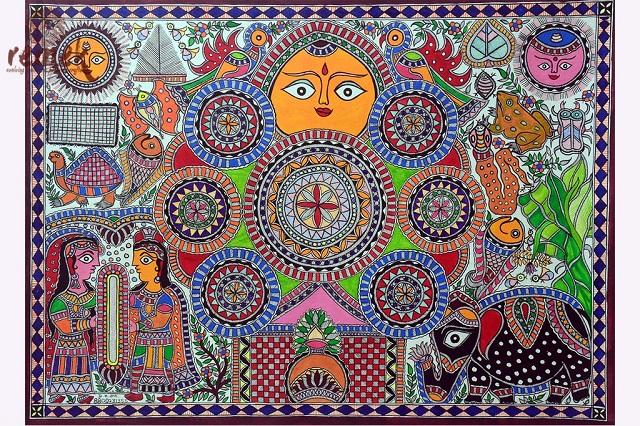
Also known as Mithila painting. The art began from the kingdom of Raja Janak (Sita’s father in Ramayana). It’s among the most well-known Indian folk art forms that is practiced mostly by women who wished to be in harmony with God. It is characterized by geometric patterns. the art form was not known to the world at large up until British discovered it following the 1930’s earthquake revealed homes that were destroyed that were decorated with Madhubani paintings. The style echoes the works by Picasso and Miro as per William G. Archer. The majority of these paintings or wall murals depict gods, flora and fauna.
Patachitra Indian Folk Art Forms
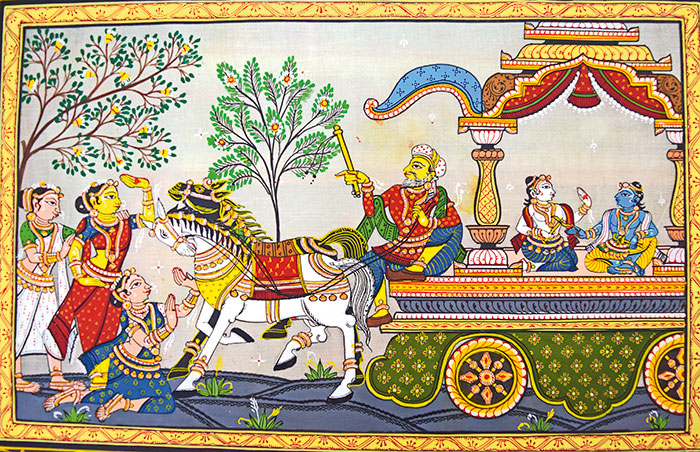
A scroll made of cloth that originates of Odisha as well as West Bengal, these paintings with sharp, angular and bold lines depict epics, gods and Goddesses. The kind of folk art was first discovered in the fifth century, in places of worship like Puri and Konark in the middle of the when sculpturing was beginning in the context of there being no distinct distinction between a sculptor and an artist at the time. Dressing style depicted in these paintings bears a significant influence from the Mughal time period.
Indian art and culture is very unique across the world. Right from tradition, custom, paintings, food and festivals. Each and everything has its own aroma. Apart from above listed Folk Art Forms of India, many more art forms are still unexplored.
Read Also:
12 Stunning Indian Locations That Resemble Foreign Destinations
Unique Weird and Unusual Restaurants of India


